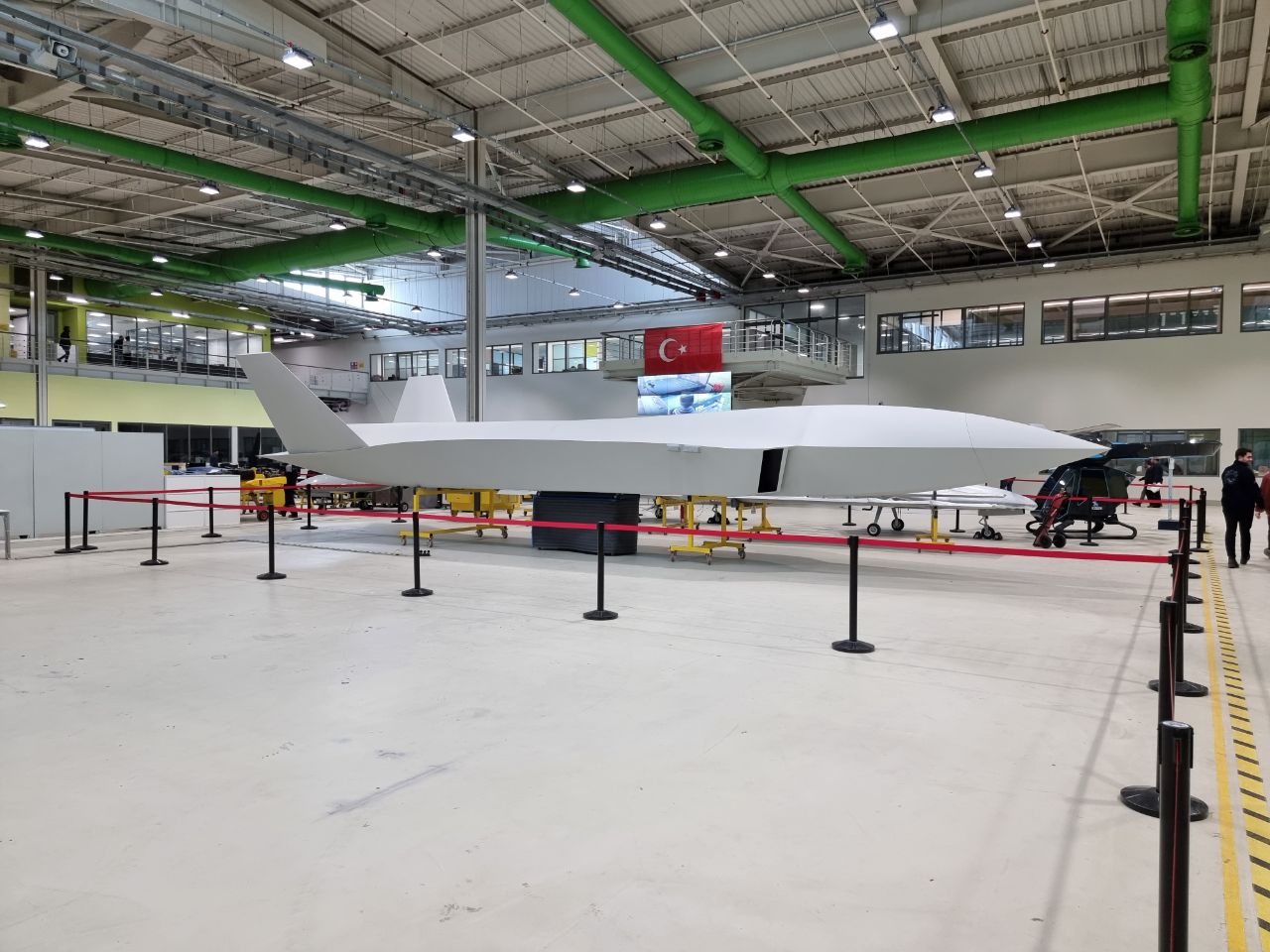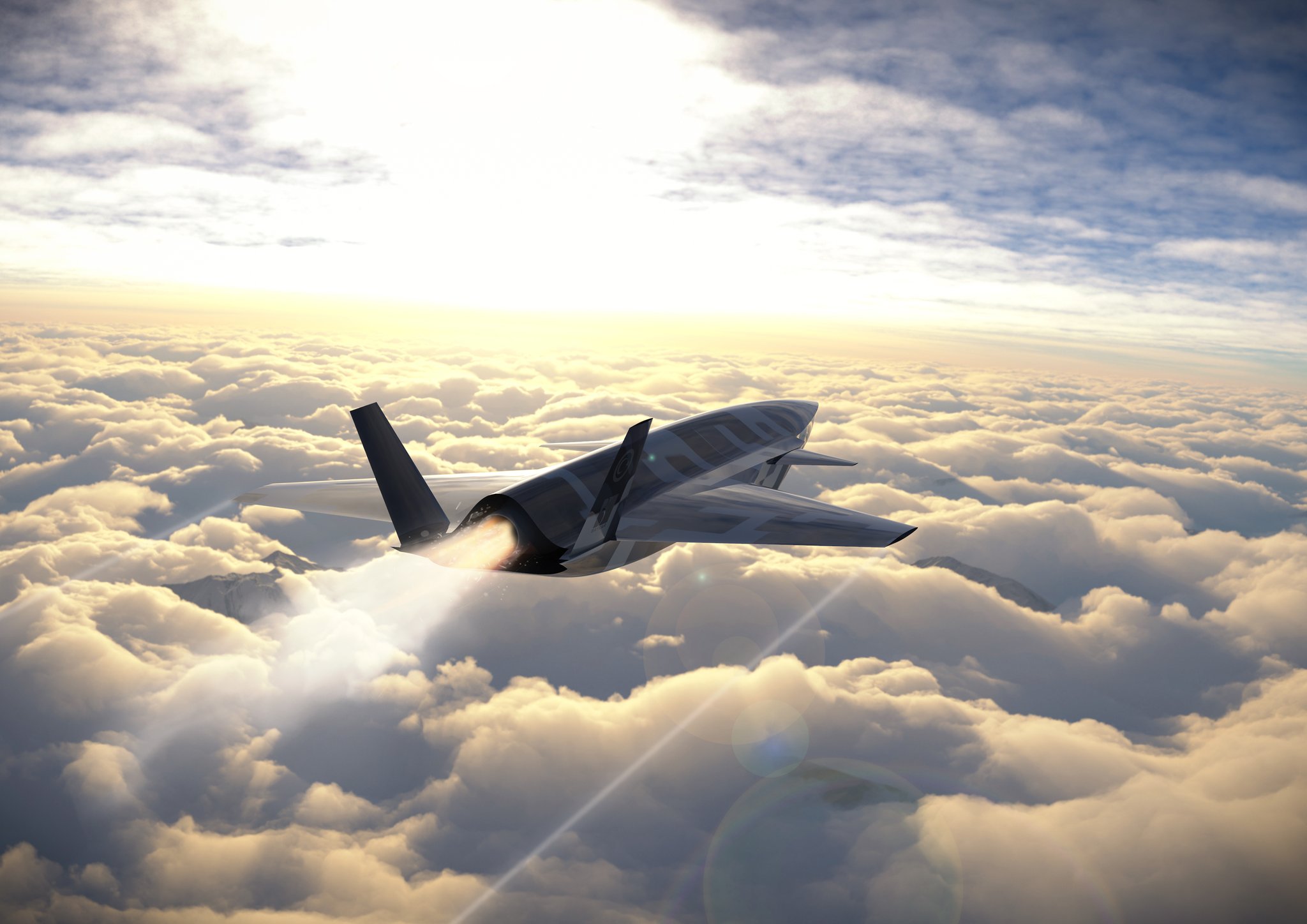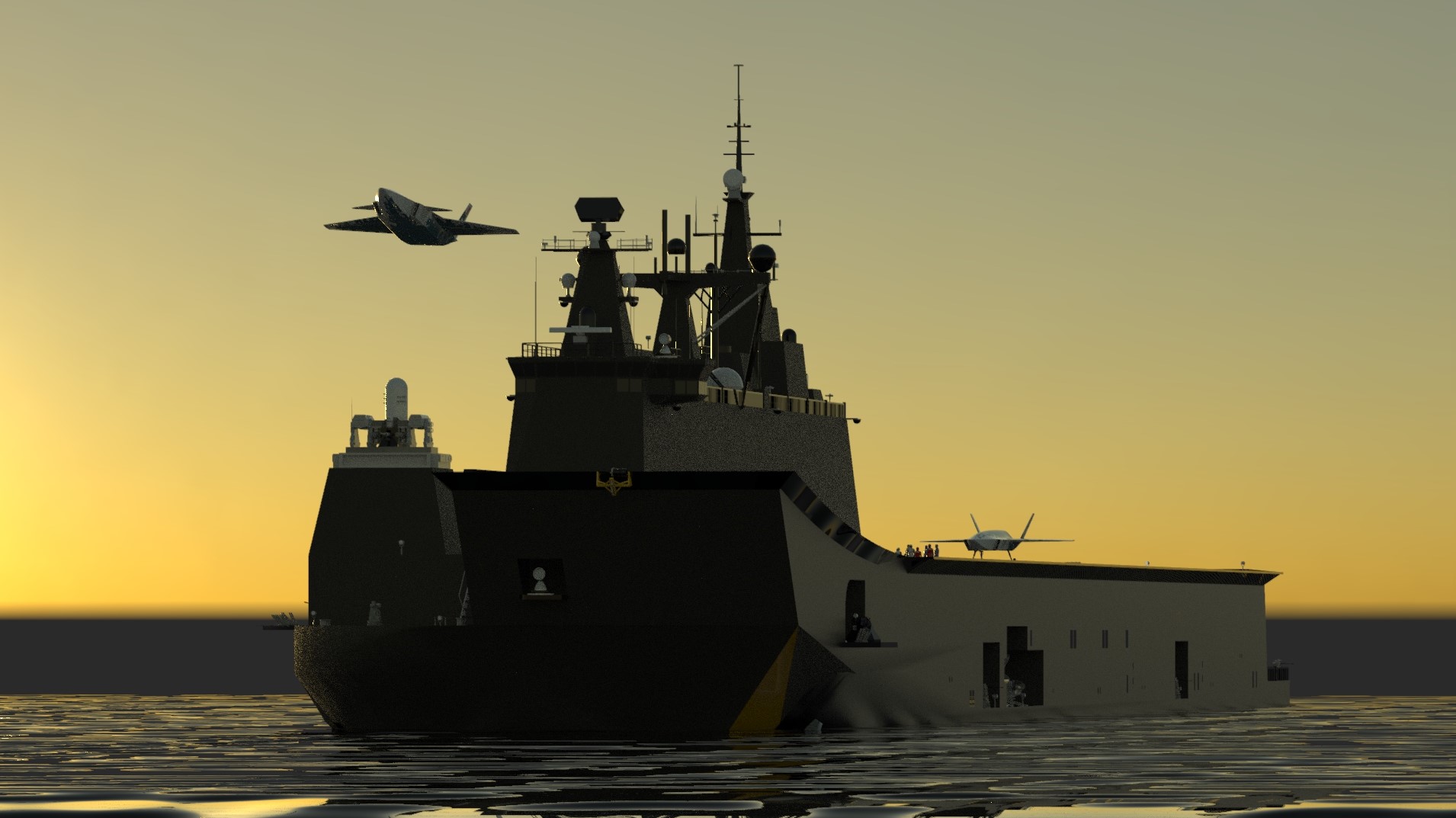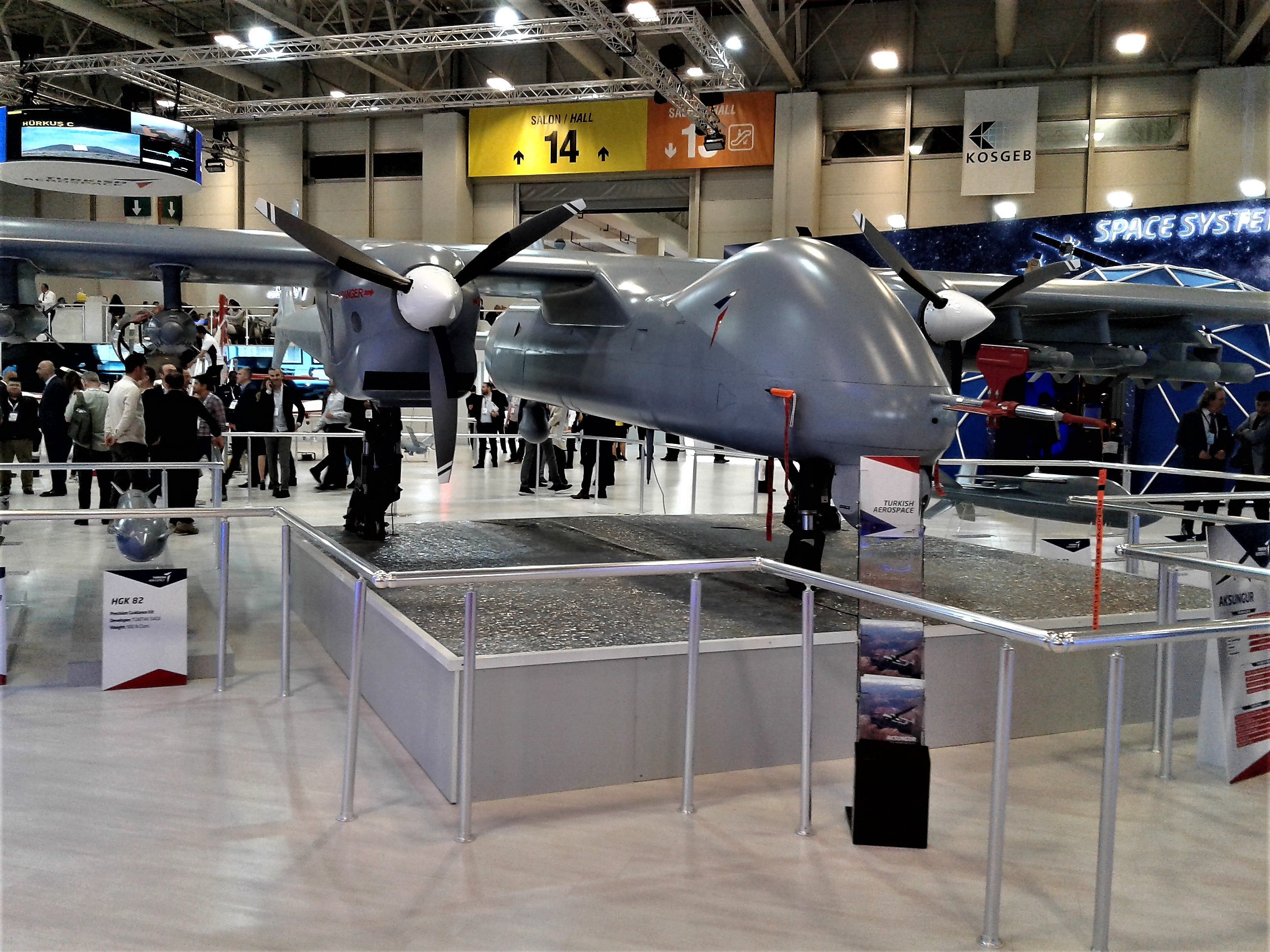Ukrainian forces have claimed that Turkish Bayraktar TB2 drones inflicted heavy damage on the invading Russian troops, destroying their artillery and tanks in the past few days.
Perhaps buoyed by this success, the drone maker Baykar claimed on March 12 that the first prototype of its newest combat drone, officially called the National Unmanned Combat Aerial Vehicle System (MIUS), has entered the production line.
“A larger and more agile fish has entered the production line three and a half years later,” Selçuk Bayraktar, the chief technology officer (CTO) at Baykar, tweeted.
He was referring to the time when Baykar began producing its iconic combat drone ‘Akinci’, also known as “the flying fish”. The UCAV had completed a 16-minute maiden flight on December 6, 2019.
The newest project, MIUS, has been given the name ‘Kizilelma’ (red apple), according to Bayraktar, referring to a Turkish metaphor that represents aspirations, ideals, or desires that are far away yet become more appealing the further they are. The first prototype is slated to take to the skies by 2023, Daily Sabah reported. Turkey will be celebrating its centennial year in 2023.
Üretim hattına 3 buçuk yıl sonra daha büyük ve daha çevik bir balık girdi. ?
MİUS – İnsansız Savaş Uçağı:
Bayraktar KIZILELMA ?
Yolda geliyor, takipte kalın…#MilliTeknolojiHamlesi ✈️???? https://t.co/Jh9Nhxa0MG pic.twitter.com/nwUBXVyTWT
— Selçuk Bayraktar (@Selcuk) March 12, 2022
But there is a twist in the tale. Baykar had inked a contract for the acquisition of engines for the MIUS in November last year with Ivchenko-Progress, one of Ukraine’s biggest enterprises. Under the terms of the arrangement, Ivchenko-Progress was expected to supply the AI-322F Turbofan engine for the UAV.
It is not clear how this project will move forward, given the ongoing war in Ukraine.
In addition to the MIUS project, Baykar is actively developing the Bayraktar TB3 UCAV, an improved variant of the Bayraktar TB2.
The TB2s have proven their mettle not only in Ukraine but also in war zones such as Ethiopia, where these UAVs helped the government win over Tigray insurgents, and in the Nagorno-Karabakh conflict in 2020, where Azerbaijani troops used TB2 drones against Armenia.
The success of these low-cost, high-lethality drones in complex battle zones has put the Turkish drone industry in the limelight.
The industry is also set to compete for drone tenders at the 17th Defense Services Asia Exhibition and Conference in Kuala Lumpur, Malaysia, at the end of March, as previously reported by the EurAsian Times.

The MIUS Project
During the 2019 Innovation Week, the MIUS project (Akinci or Kizilelma) was unveiled along with the Bayraktar TB2 drone. The Akinci drone (MIUS) or “the flying fish” was touted as a crucial step toward Baykar Makina’s goal of improving UAV technology.
On July 20 last year, Selcuk Bayraktar, Turkish President Recep Tayyip Erdogan’s son-in-law and the Chief Technological Officer (CTO) of Turkish defense corporation Baykar, presented a video detailing the future unmanned combat aerial vehicle (UCAV).

In the video, Bayraktar can be heard saying, “Unmanned aircraft will change the concept of air warfare and will replace fifth-generation aircraft,” a caustic statement ostensibly directed at the United States, which continues to take pride in its fifth-generation F-35 fighter jets.
Following the announcement, the corporation further revealed concept images of the MIUS drone, showcasing the fighter’s aircraft carrier variant with short-takeoff capabilities.

Bayraktar had previously stated that since the domestic development of fighter jets such as the F-35 – from which Turkey had been expelled following its purchase of the Russian S-400 air defense system – can take a long time, Turkey’s platform may fall behind a generation, which is why developing unmanned fighter jets is so important for the country’s defense industry.
Rather than building an F-35-like aircraft in 15 to 20 years, Bayraktar said, they were focusing on areas where the world is already moving — lower-cost, AI-equipped unmanned fighters.
Additionally, Ankara is also pursuing its own fifth-generation TF-X fighter jet program. The aircraft, being produced by Turkish Aerospace Industries (TAI), is set to make its flight in the next couple of years.

Earlier, the Aksungur (gyrfalcon), TAI’s next-generation armed drone, was presented to the Turkish military last year. It was developed in around 18 months, according to the corporation, using domestic and national resources.
The Kizilelma Drone
The AI-powered Bayraktar Kizilelma (MIUS) will be capable of aggressive maneuvers and air-to-air warfare in the same way that manned warplanes do. In the future, it is expected to become one of the most powerful vehicles on the battlefield.
Selçuk Bayraktar introduces the new jet-powered, supersonic, unmanned combat aircraft Bayraktar #Kızılelma or 'Red Apple' @Selcuk: pic.twitter.com/sPy4hgTBGq
— Sümeyye Ceylan (@sumeyyeceylaen) March 13, 2022
The Kizilelma will be able to land and take off on ships with limited runways, such as the Turkish-built TCG Anadolu. The amphibious assault ship or the landing helicopter dock (LHD) is reported to be the first of its kind in the world, allowing combat drones to land on its dock. It will be delivered this year and will be used in multipurpose operations.
As a result, the combat drone is intended to play a key part in operations such as the preservation of the “Blue Homeland”, a goal to recover Turkey’s Ottoman glory and marine dominance in the Mediterranean where it is in direct conflict with fellow NATO member, Greece.
According to the manufacturer, the autonomously navigating MIUS will be able to work in tandem with piloted aircraft and may carry air-to-air missiles. Strategic offensives, close air support (CAS), missile offensives, suppression of enemy air defenses (SEAD), and destruction of enemy air defenses are all expected to be conducted by this drone.
The unmanned aircraft will have a high operational altitude and a 5,500-kilogram takeoff weight (12,125 pounds). It will be able to transport 1.5 tons of useful payload. It is expected to be able to fly for five hours and reach speeds of up to 800 kilometers per hour (500 mph or Mach 0.64).
With the AESA radar to be installed, Bayraktar Kizilelma, which is designed to stay in the air for 5 hours with a 500-nanometer mission radius, will have high situational awareness.
The Bayraktar Kizilelma, according to the company’s information, will be a force to be reckoned with, owing to its aggressive mobility and radar stealth potential.
Ukrainian Engine For MIUS
In November last year, Baykar had signed a contract with Ukrainian company Ivchenko-Progress for the supply of engines for the MIUS. Under the terms of the arrangement, Ivchenko-Progress was expected to supply the AI-322F Turbofan engine for the UAV.
“With the new contract, we will install the AI-322F engine, produced jointly by Ivchenko Progress and Motor Sich, in our unmanned fighter aircraft. I hope that this deal will further the strategic cooperation between the two countries,” Haluk Bayraktar, CEO at Baykar, had said after signing the contract at the SAHA EXPO Defense and Aviation Hybrid Fair in Istanbul.
Baykar had further said it had inked an agreement with another Ukrainian company, Motor Sich, for the acquisition of MS500 Turboprop Engine Technical Specification.
According to Daily Sabah, the initial prototype of MIUS would be powered by a turbofan and will travel at Mach 0.8, while the subsequent variants will travel at supersonic speeds. A SATCOM antenna will allow for satellite-based autonomous control.
For surface warfare, the future unmanned aircraft will be equipped with SOM-J cruise missiles with a range of more than 250 kilometers and Roketsan-made MAM family guided bombs.
That said, Baykar is yet to provide details of how the two Ukrainian companies will supply the engines for its newest drone, projected as the most advanced and lethal UCAV it has ever made.
- Co-authored by Sakshi Tiwari
- Contact the author (s) at etdesk@eurasiantimes.com
- Follow EurAsian Times on Google News




